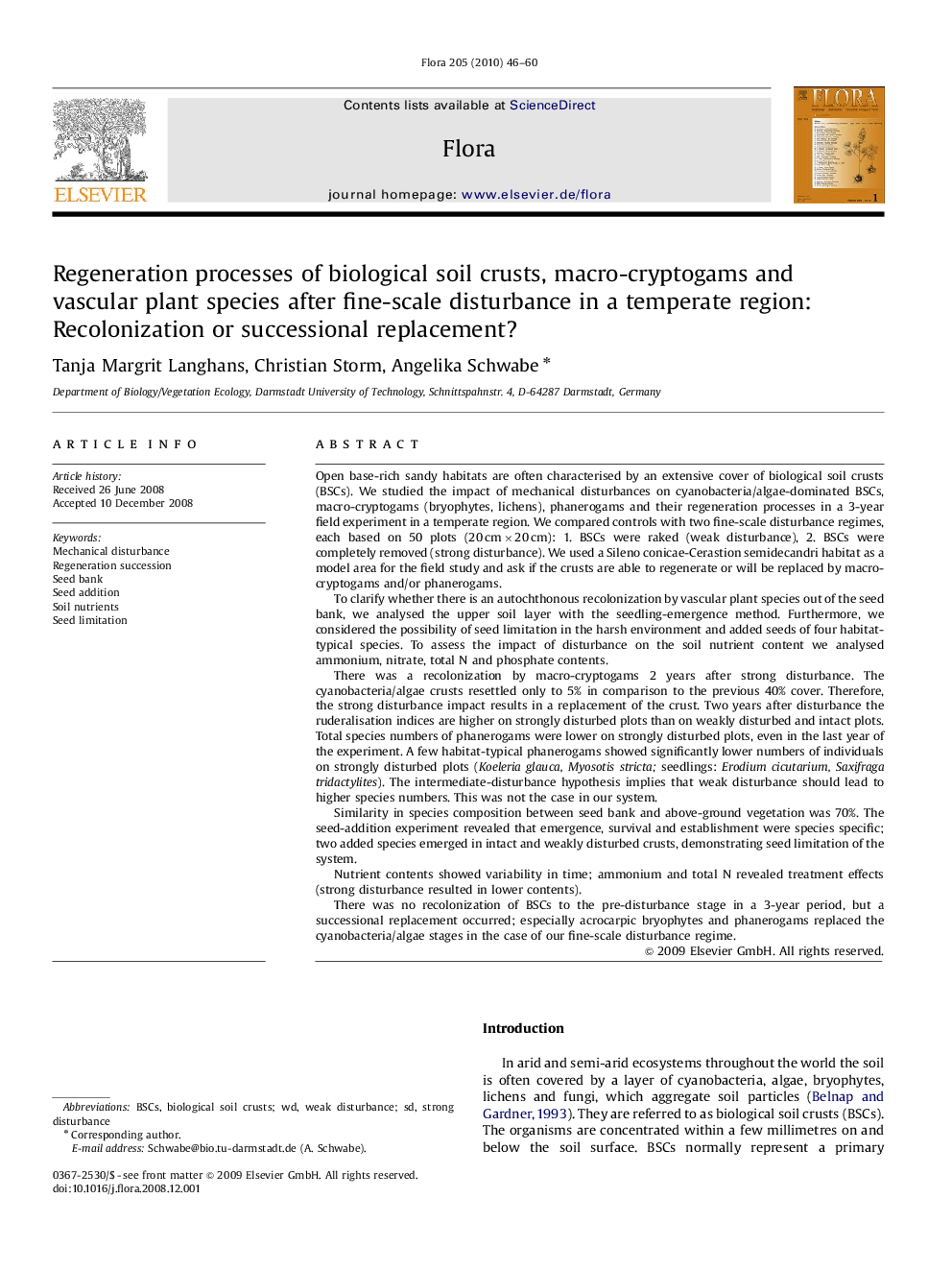| کد مقاله | کد نشریه | سال انتشار | مقاله انگلیسی | نسخه تمام متن |
|---|---|---|---|---|
| 2179969 | 1095098 | 2010 | 15 صفحه PDF | دانلود رایگان |

Open base-rich sandy habitats are often characterised by an extensive cover of biological soil crusts (BSCs). We studied the impact of mechanical disturbances on cyanobacteria/algae-dominated BSCs, macro-cryptogams (bryophytes, lichens), phanerogams and their regeneration processes in a 3-year field experiment in a temperate region. We compared controls with two fine-scale disturbance regimes, each based on 50 plots (20 cm×20 cm): 1. BSCs were raked (weak disturbance), 2. BSCs were completely removed (strong disturbance). We used a Sileno conicae-Cerastion semidecandri habitat as a model area for the field study and ask if the crusts are able to regenerate or will be replaced by macro-cryptogams and/or phanerogams.To clarify whether there is an autochthonous recolonization by vascular plant species out of the seed bank, we analysed the upper soil layer with the seedling-emergence method. Furthermore, we considered the possibility of seed limitation in the harsh environment and added seeds of four habitat-typical species. To assess the impact of disturbance on the soil nutrient content we analysed ammonium, nitrate, total N and phosphate contents.There was a recolonization by macro-cryptogams 2 years after strong disturbance. The cyanobacteria/algae crusts resettled only to 5% in comparison to the previous 40% cover. Therefore, the strong disturbance impact results in a replacement of the crust. Two years after disturbance the ruderalisation indices are higher on strongly disturbed plots than on weakly disturbed and intact plots. Total species numbers of phanerogams were lower on strongly disturbed plots, even in the last year of the experiment. A few habitat-typical phanerogams showed significantly lower numbers of individuals on strongly disturbed plots (Koeleria glauca, Myosotis stricta; seedlings: Erodium cicutarium, Saxifraga tridactylites). The intermediate-disturbance hypothesis implies that weak disturbance should lead to higher species numbers. This was not the case in our system.Similarity in species composition between seed bank and above-ground vegetation was 70%. The seed-addition experiment revealed that emergence, survival and establishment were species specific; two added species emerged in intact and weakly disturbed crusts, demonstrating seed limitation of the system.Nutrient contents showed variability in time; ammonium and total N revealed treatment effects (strong disturbance resulted in lower contents).There was no recolonization of BSCs to the pre-disturbance stage in a 3-year period, but a successional replacement occurred; especially acrocarpic bryophytes and phanerogams replaced the cyanobacteria/algae stages in the case of our fine-scale disturbance regime.
Journal: Flora - Morphology, Distribution, Functional Ecology of Plants - Volume 205, Issue 1, 2010, Pages 46–60